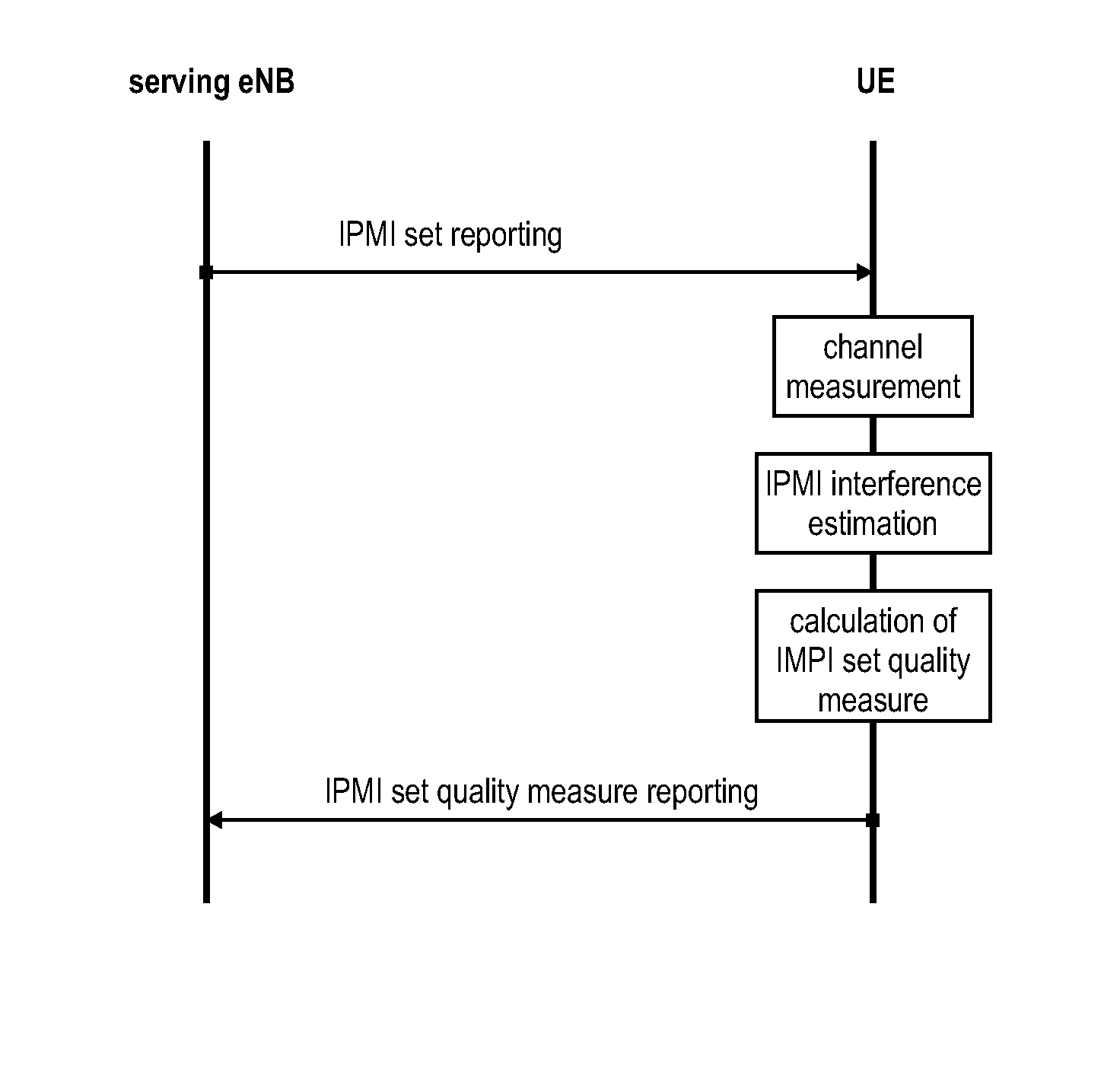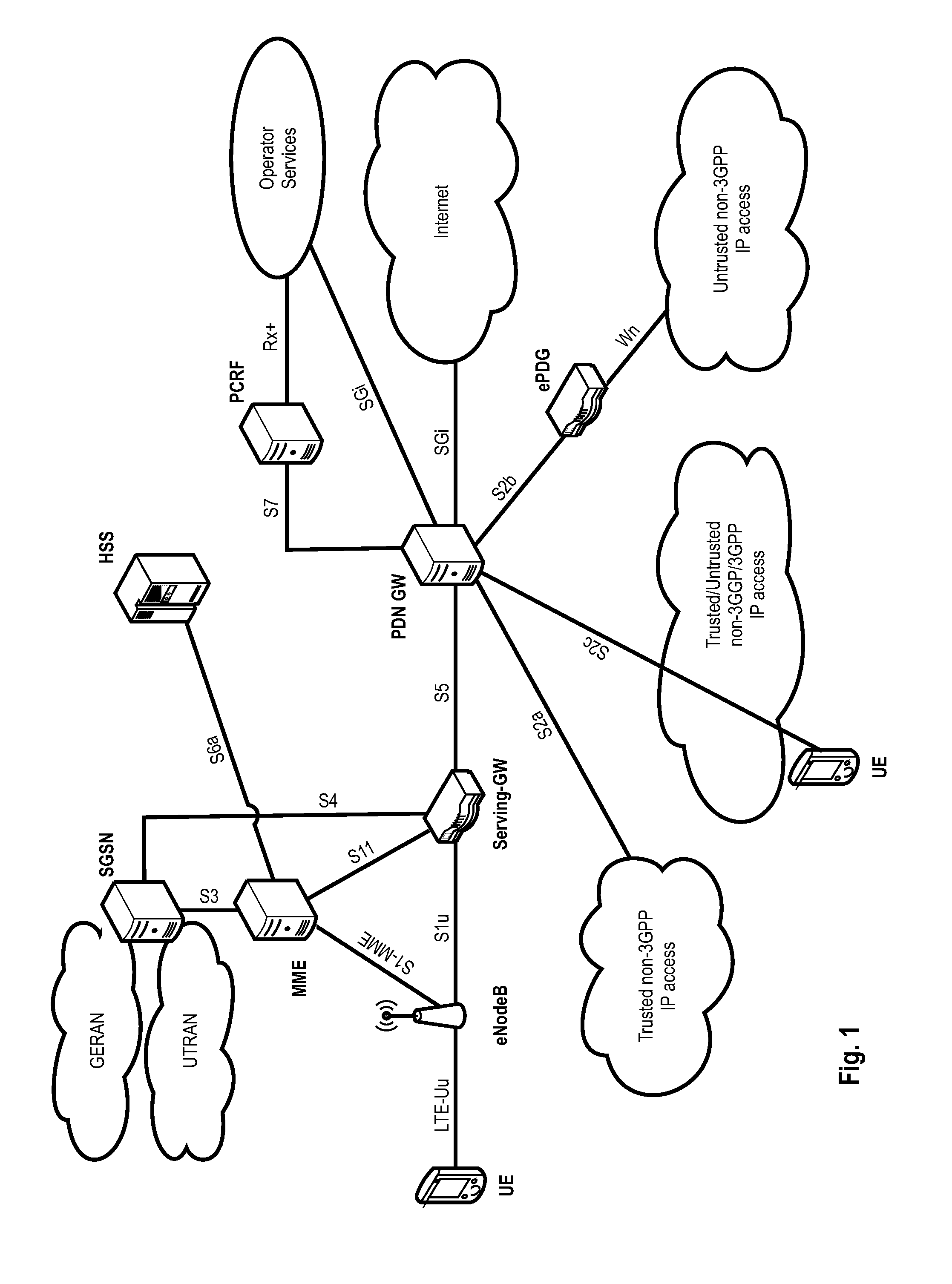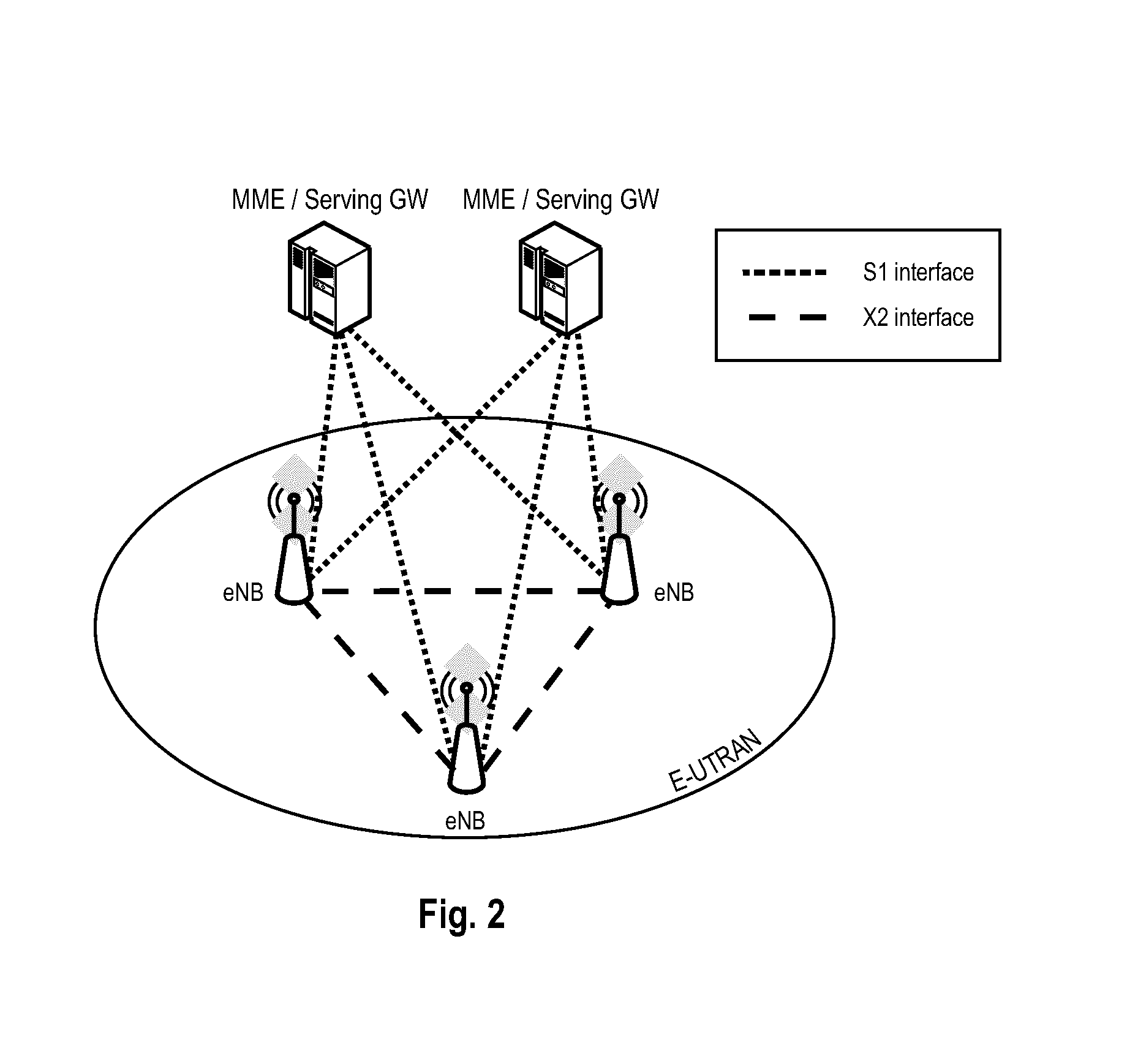Precoding matrix set quality measurement and reporting
a precoding matrix and quality measurement technology, applied in the field of precoding matrix set quality measurement and reporting, can solve the problems of one base station (cell) not knowing which precoding to use, and the set of precoding matrices usable by the inteferer base station is restricted
- Summary
- Abstract
- Description
- Claims
- Application Information
AI Technical Summary
Benefits of technology
Problems solved by technology
Method used
Image
Examples
Embodiment Construction
[0135]The following paragraphs will describe various embodiments of the invention. For exemplary purposes only, most of the embodiments are outlined in relation to radio access scheme according to 3GPP LTE (Release 8 / 9) and LTE-A (Release 11) mobile communication systems, partly discussed in the Technical Background section above. It should be noted that the invention may be advantageously used for example in a mobile communication system such as 3GPP LTE-A (Release 11) communication systems as described in the Technical Background section above, but the invention is not limited to its use in this particular exemplary communication networks. The invention may be for example used in non-3GPP system such as WIMAX.
[0136]One aspect of the invention is to determine a more meaningful quality measure for a precoding matrix set that might be used by an inteferer base station in a neihbouring cell. It is assumed that the interfering base station applies an precoding matrix (IPMI) restriction...
PUM
 Login to View More
Login to View More Abstract
Description
Claims
Application Information
 Login to View More
Login to View More - R&D
- Intellectual Property
- Life Sciences
- Materials
- Tech Scout
- Unparalleled Data Quality
- Higher Quality Content
- 60% Fewer Hallucinations
Browse by: Latest US Patents, China's latest patents, Technical Efficacy Thesaurus, Application Domain, Technology Topic, Popular Technical Reports.
© 2025 PatSnap. All rights reserved.Legal|Privacy policy|Modern Slavery Act Transparency Statement|Sitemap|About US| Contact US: help@patsnap.com



